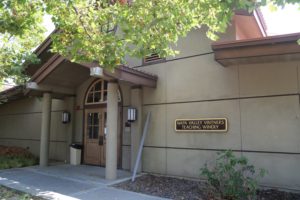
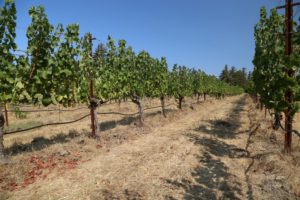
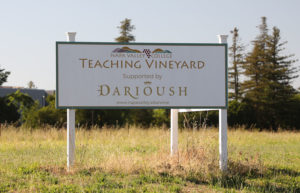 Napa Valley College Estate Winery. Over the past several decades we have talked to a number of vintners who have taken wine related classes at Napa Valley College through the Viticulture and Winery Technology Department. The first courses in this department were offered in 1984. For reference that was two years after what was then called Napa College changed its name to Napa Valley College. The college was originally founded in 1942 as Napa Junior College and from the 1940s through the early 1960s, its home was on the grounds of Napa High School on Jefferson Street in the city of Napa. Land for the current site of the college was purchased in the early 1960s with classes held here for the first time in 1965. This property used to be part of land owned by the nearby Napa State Hospital.
Napa Valley College Estate Winery. Over the past several decades we have talked to a number of vintners who have taken wine related classes at Napa Valley College through the Viticulture and Winery Technology Department. The first courses in this department were offered in 1984. For reference that was two years after what was then called Napa College changed its name to Napa Valley College. The college was originally founded in 1942 as Napa Junior College and from the 1940s through the early 1960s, its home was on the grounds of Napa High School on Jefferson Street in the city of Napa. Land for the current site of the college was purchased in the early 1960s with classes held here for the first time in 1965. This property used to be part of land owned by the nearby Napa State Hospital.
The college teaching winery opened in 2002 and in the spring of 2008, the winery acquired its bond, making this the first community college in California to have a physical bonded winery on campus; they beat Santa Rosa Junior College in this regard by merely a month. Their first vintage was in 2008. For 20+ years previously, the college’s wine program served the community well and building a winery on campus made a lot of sense, especially in Napa Valley.
Today the enrollment is as diverse as there are wineries in Napa Valley. Students come from overseas; some are sent by companies to learn wine making, home wine makers want to further their education, there are those who are interested in the wine industry for the first time, a large percentage of the students are already working at other local wineries and still others want to make their own wine commercially in Napa Valley or beyond.
Some classes are offered in the evenings, especially useful for those who have day time jobs. For those who do not live in or near the city of Napa, the program offers a remote learning course with an in-person week long session. And with a wealth of resources in the local wine community, classes may host guest lecturers or mini field trips may be taken to various vineyards and or wineries. They don’t have to travel far with numerous vineyards and wineries within a couple mile drive from campus. Students one of three educational paths including winemaking, viticulture or wine marketing and sales and upon graduating will receive either a certificate or an associate of science degree.
After graduating, some of their students transfer to other four-year university with wine and viticulture programs including UC Davis to complete their wine education. The program is rightly proud of their job placement networks available both locally and in other select wine regions. Feeling too old to get into the wine industry? Think again, the average age of the students runs between 40 and 45 depending on the semester.
The winery and wine making program has received tremendous support from the surrounding wine industry. The Trefethen Family (owners of Trefethen Winery) donated money to build the primary classrooms within the Trefethen Family Viticultural Center (built in 1999) and the Napa Valley vintners came forward with financial support for the actual winery, appropriately named, Napa Valley Vintners Teaching Winery which opened in 2002. In addition, physical donations have been made including a number of donated bottles and embossed foils. And the winery has their own bottling line.
The core of the winemaking program provides students a solid understanding of how to operate winery equipment, do lab work, and imparts critical details about the entire winemaking process. From 1986 until retiring in 2014, Dr. Stephen Krebs oversaw the program and was the viticulturist for their estate vineyard. During our first visit to the winery, Brian Avila was the head winemaker and was who we met with years ago; he taught several “learn by doing” winemaking courses. The winemaking program is entirely hands on as Brian told us, “If you make a mistake here, that’s part of the learning process – you won’t be fired”! The class is held once a week, but a working winery needs attention daily – in that regard they offer internships and students can learn and work at the winery outside of regularly scheduled class times.
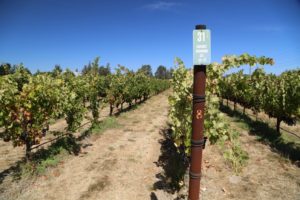
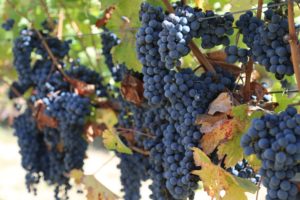 One professor synonymous with Napa Valley College’s Viticulture and Winery Technology Department is Paul Wagner. He has taught at the college since the mid 1990s, is a prolific author, wine judge and also founded Balzac Communications in 1991, offering marketing, communications, strategy and public relations to wine and wine tourism clients.
One professor synonymous with Napa Valley College’s Viticulture and Winery Technology Department is Paul Wagner. He has taught at the college since the mid 1990s, is a prolific author, wine judge and also founded Balzac Communications in 1991, offering marketing, communications, strategy and public relations to wine and wine tourism clients.
Their entire production is from their highly visible six acre vineyard located on campus between the physical winery and the often busy Highway 121. The vineyard is planted to both Bordeaux and Burgundian varieties. Grapes from this vineyard used to be sold to area wineries but are no longer sold as all fruit is kept in house. The first vines planted here were in 1985.
This vineyard underwent a complete replanting, starting in 2022 to Chardonnay, Sauvignon Blanc, Pinot Noir and Cabernet Sauvignon. Two blocks are worth noting: the Library Block features two vines each from numerous varieties from around the world and the Hot Block features grapes that typically grow in much cooler conditions with the intent to gauge their performance and resilience in warmer conditions. And in between production from the estate vineyard, grapes were both donated and purchased from other sites to ensure production continued. Some unique varieties grown here are Assyrtiko, Xarel.lo, Macabeo and Mencia.
This vineyard is located south of the city of Napa and is in a part of Napa Valley between Jamieson Canyon and Carneros, two of Napa’s notoriously coldest growing regions. This part of Napa Valley is heavily influenced by the nearby chilly waters of the San Pablo Bay. Bordeaux of Napa is the winery’s motto indicating not only their cool growing region in the valley, but also the style of wines they make.
And with classes offered at different times of the year, students will be tasked with learning different tools; for example in spring education will focus on pruning, suckering, tucking and shoot thinning, whereas in the fall a different set of tools will be taught including fruit dropping, netting the vines, measuring acid, sugar and pH levels, the intricacies of actually picking grapes and a different set of cellar activities than in spring.
As of 2024, exciting developments are happening at the school’s wine program, the largest of its kind in the country with an enrollment of approximately 450 students. A two-phase plan has been formed for a wine education center including construction of two sensory classrooms totaling 7,000 square feet, tearing down the existing Trefethen classroom and building in its place, a state-of-the-art laboratory with more than 25 stations and a wine and hospitality training center. One of the classrooms will still be named in honor of the Trefethen family. And the Ag Barn dating from the 1940s was demolished.
On May 17, 2024 a ground breaking ceremony signaled the start of Phase 1 construction of the 16.5 million dollar Wine Spectator Wine Education Complex. NOTE: We will revisit and update our notes and photography on this review once this building is completed.
In 2021, the Wine Spectator Scholarship Foundation donated its largest gift ever (10 million dollars) to Napa Valley College to help build what will the Wine Spectator Wine Education Complex. This money will fully fund Phase 1. 2.5 million was also donated from the estate of Evelyn Allen (a former student). And in mid 2022 Darioush Khaledi of Darioush Winery donated $100,000 to the Teaching Vineyard at Napa Valley College in support of replanting efforts needed at that time.
Phase 2 is a Wine and Hospitality Training Center; as of our latest update to this review, Phase 2 has not yet been fully funded and donations are currently being accepted with a variety of associated naming rights. The Wine & Hospitality Training Center will include a classroom, a demonstration kitchen, a tasting bar and event spaces.
Select Wines
We have never had a ‘cookie cutter’ wine from the Napa Valley College wine program. Each bottling is distinctive and more often than not highlights the varietal characteristics. These are wines with personalities rather than homogeneity. And if you have any doubts about the quality of wines from a student run college winery, we can squelch those skepticisms right now. We were fortunate to visit and taste the early vintage wines; it is great to see the progression, both in terms of wine quality, style and packaging.
Whites
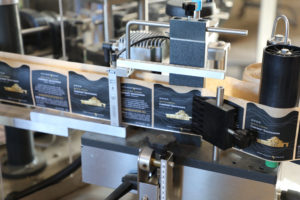
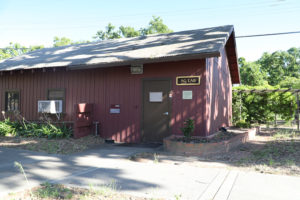 The 2022 Napa Valley College Estate Sauvignon Blanc is medium straw in color. Sometimes when smelling wines we ask ourselves, “could we identify this as the varietal based on its typicity from aroma alone?” And the answer to that question with this particular bottling is an emphatic yes. The bouquet offers aromas of citrus blossom, jasmine, gooseberry, lime juice, green apple, lemongrass, passion fruit, pineapple guava and crushed kaffir lime leaf. It shows plenty of herbal notes but is not linearly green or grassy. The palate is bright, vibrant, minerally and refreshing supported by a light saline texture. It offers flavors of honeydew melon, kumquat, lime juice, grapefruit and green apple with a lingering hint of tarragon. We could see pairing this with a creamy garlic pasta dish or to totally switch things up, pair with a spicy Thai pad prik king moo (stir fried pork with chili and ginger).
The 2022 Napa Valley College Estate Sauvignon Blanc is medium straw in color. Sometimes when smelling wines we ask ourselves, “could we identify this as the varietal based on its typicity from aroma alone?” And the answer to that question with this particular bottling is an emphatic yes. The bouquet offers aromas of citrus blossom, jasmine, gooseberry, lime juice, green apple, lemongrass, passion fruit, pineapple guava and crushed kaffir lime leaf. It shows plenty of herbal notes but is not linearly green or grassy. The palate is bright, vibrant, minerally and refreshing supported by a light saline texture. It offers flavors of honeydew melon, kumquat, lime juice, grapefruit and green apple with a lingering hint of tarragon. We could see pairing this with a creamy garlic pasta dish or to totally switch things up, pair with a spicy Thai pad prik king moo (stir fried pork with chili and ginger).
The 2010 Napa Valley College Sauvignon Blanc was fermented entirely in stainless steel. The bouquet initially offers aromas of pear followed by citrus including orange peel and notes of lemon as the wine opens. The mid palate is slightly rounded. The clean finish is surprisingly long and shows flavors of green and red apple. Stylistically, this wine is focused on the inherent varietal characteristics of Sauvignon Blanc. We always appreciate that.
The 2019 Napa Valley College Estate Chardonnay is pale yellow in color; the bouquet is a bit shy initially and needs time to reveal its layers. These include scents of pineapple, lightly toasted oak, cantaloupe, honeycomb, honeysuckle, jasmine and some stone fruit influences including apricot and yellow peaches. Ripe, rich and layered on the palate, it offers flavors of crème Brule, baked apple, pear, vanilla pudding, tapioca, warm butter and assorted baking spices. Its texture is lightly rounded and supple. The finish lingers with both fruit, a lingering bitter note (perhaps like greenish almond), lightly toasted oak and macadamia nut. Pair this wine with giant freshwater prawns which have been cooked on the BBQ.
To build skill sets during classes, students will make wines in a particular style. Case in point is the 2009 Napa Valley College Chardonnay; stylistically this wine is made opposite of how the 2010 Sauvignon Blanc was crafted. Components of this wine were fermented and aged separately based on two types of yeasts and then ultimately blended together before bottling. In contrast to the Sauvignon Blanc this Chardonnay was entirely barrel fermented in new American oak. Notes of oak initially show on the bouquet and as the wine breathes more aromas come forward including orange blossom, honeysuckle and a hint of crème Brulé. The palate is rounded with some weight with lingering fruit on the finish as well as toasted oak.
Reds
The 2019 Napa Valley College Estate Pinot Noir is pale ruby in the glass; immediately after smelling this wine we noted its baking spice characters including of cinnamon, clove, cardamom along with espresso, white pepper and smoked meats. Its fruit notes are of raspberry and wild strawberries which become more pronounced as the wine opens. There is also a layer of dried Tonka bean. The palate is balanced and focused on its core fruit characteristics with assorted spices offering additional complexities. Flavors include red cherry, red plum, strawberry and raspberry with notes of pink and dark peppercorns, bitter chocolate, a gamey and savory nuance, cinnamon and red licorice. The finish lingers dark and spicy with lightly grainy tannins; both fruit and texture continue to persist for some time. If we had to guess and this is a total guess, we might say this wine was fermented at least partial whole cluster. It was blended from 20 different fermenting lots. Pair with assorted smoked meats.
The 2009 Napa Valley College Pinot Noir sports a spicy bouquet with aromas of cloves, white pepper, a dusty soil character, cranberry and perhaps a bit of cardamom. Aromatically there is a lot going on with this wine. It features bright acidity but is balanced by lots of fruit across the palate. The finish is lively and long with both fruit, wood tannins and perhaps a bit surprising, a light lingering presence of heat from the alcohol.
The 2019 Napa Valley College Estate Cabernet Sauvignon is deep ruby in color; the bouquet highlights the fruit characteristics of the variety with aromas of dark plum, black cherry and blackberry accompanied by some secondary scents including a woodsy spice, warm leather, crushed dark peppercorn and deeper in these layers is a hint of mocha and cardamom. This wine reveals flavors of red plum, currant, tart berry, currant and red cherry. Crunch, juicy and mouth watering. The numerous chalky and still tightly woven tannins linger with an herbal note, a dusty and drying nuance, dried tobacco leaf, pink peppercorn and a simultaneous tartness. We would enjoy tasting this wine in another 10 years to gauge its development; it has an age worthy character. Pair with a pepper and herb crusted prime rib.
The 2008 Napa Valley College Cabernet Sauvignon (inaugural release) comes in under 13% alcohol. The nose is restrained and elegant; this wine proves one does not have to reach higher alcohol levels to show fruit or eliminate greenness, of which there is none in this wine. Red fruits dominate across the palate including currant and cherry, framed with an energetic acidity. The finish is surprisingly long, the longest of any of the wines we tried, including plenty of fruit and accompanying structure.
It is always nice to discover wines with lower alcohol levels; all the wines we tasted are under 14%. However since our first visit, alcohol levels have increased significantly and are now in line with other producers in the valley.
The 2009 Napa Valley College Syrah clocks in at merely 11.7% alcohol – perhaps the lowest alcohol from a bottling of this variety we’ve tried in Napa Valley. The nose is dominated by aromas of black licorice followed by bacon fat, blueberry, dried rose petal and a kiss of chocolate hiding in the background. This lighter style cool weather Syrah, like the other red wines we tried, features bright mouthwatering natural acidity. This is a balanced and food friendly bottling.
—
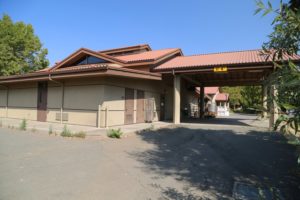
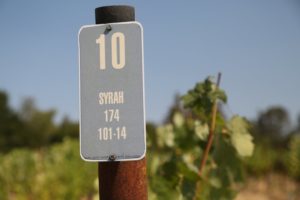
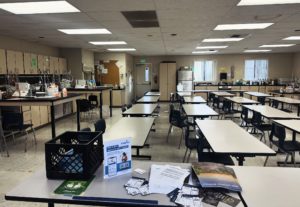 What became an annual tradition for a number of years was their first special donation of wine to the Napa Valley Wine auction in 2011. The Napa Valley Wine Auction has since transitioned into Collective Napa Valley. This big format bottle was not your typical 12-liter Balthazar, rather the wine was bottled in a ceramic amphora created by the college’s ceramics department. This wine was entered in the auction and was purchased by a large format collector in Los Angeles. It was certainly one of a kind!
What became an annual tradition for a number of years was their first special donation of wine to the Napa Valley Wine auction in 2011. The Napa Valley Wine Auction has since transitioned into Collective Napa Valley. This big format bottle was not your typical 12-liter Balthazar, rather the wine was bottled in a ceramic amphora created by the college’s ceramics department. This wine was entered in the auction and was purchased by a large format collector in Los Angeles. It was certainly one of a kind!
The logo for their wine was designed on campus and features a bronze statue of a grape leaf located in front of the winery. The statue was created by accomplished wine lawyer and sculptor Richard Mendelson who also made wine commercially under his own label for many years called Mendelson Wines. Once must point out the obvious here; this is Napa Valley and winemaking is the number one agricultural industry. The college’s second label, “Head Trained Napa” features lighter style wines which are typically blends or a rosé. The wine program brought these wines to some of their marketing classes; the students designed the entire packaging for this label.
With a small staff and a lack of continuity created because of being a college winery, it is rather remarkable what the program has accomplished in such a short time. Outreach is important to their success; tastings are held from time to time at the winery for faculty and also a once a year open to the public event called the MayFair Celebration Wine Release party hosted in May. This event is hosted in the winery and includes food and wine pairings with faculty and students present. Several local restaurants used to attend and demonstrations relating to wine making were offered.
And starting in 2023, the now annual Storm Cup Golf Tournament is held at the Napa Valley Country Club in either August or September. This tournament benefits student athletes at Napa Valley College. Also founded in was the West Coast College & University Wine Festival; NVC Estate Winery sometimes attends this annual event, always held at Allan Hancock College in Santa Maria.
One of Napa Valley’s greatest secrets is the Friday evening one hour NVC Estate Winery Friday Tasting Series from 530pm to 630pm hosted in the McCarthy Library Community Room on campus. Initiated by professor Paul Wagner and organized by Enoch Schully, Manager of Winery Hospitality and Culinary Operations, these sessions feature primarily Napa Valley winemakers and or winery owners. In 2025 it was announced that Women for WineSense (WWS) partnered with Napa Valley College’s Viticulture & Winery Technology program, with 50% of the proceeds from these tastings supporting WWS.
The owner or winemaker brings a variety of their own wines and discusses a wide range of relevant wine industry topics. Attendees are required to bring their own stemware, but spit cups are provided. Some of the winemakers who have participated in these sessions include Amelia Ceja, Scott Harvey, Janet Trefethen, Steve Matthiasson, Nate Weiss and John Williams, among many others. We find these sessions incredibly valuable for what we do in the industry and use them as an opportunity to update tasting notes on our existing reviews on this website. A huge thank you to both Paul, Enoch and the winemakers for making this happen on a regular basis.
—
The Napa Valley College wine is sometimes available at several local restaurants including Carpe Diem and Downtown Joes, both in the city of Napa. Napa Valley Cooking School has served Napa Valley College wines in some of their classes. If not yet organized, we suggest a partnership between Napa Valley College Winery and Napa Valley Wine Academy – at minimum, where the wines from the winery are tasted and promoted at the academy.
Over the years, the wines have medaled at wine tasting competitions including one hosted by Sunset Magazine and have earned respectable scores. All proceeds from the purchase of their wine go directly back into the winery and the students’ education. Their total production runs between 500 and 700 cases annually. The winery is a member of the Napa Valley Vintners.
And in early 2025, for the first time, the Viticulture & Winery Technology Program had a booth at Unified Wine & Grape Symposium in Sacramento.
The winery offers a wine club with shipments sent twice yearly, either 6 bottles or 12 bottles. For more information on this unique winery, to join their wine club, to signup for the mailing list and or to purchase wine, visit: www.napavalley.edu/career-education/career-education-programs/viticulture-and-winery-technology.html

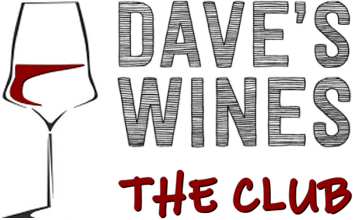




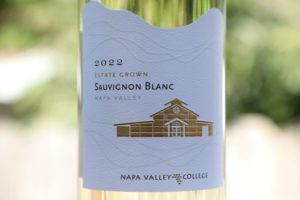
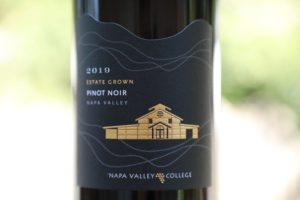
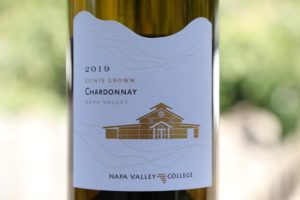

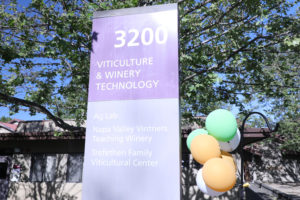
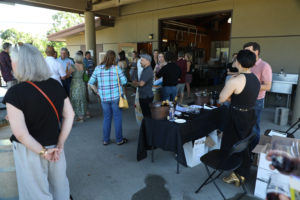
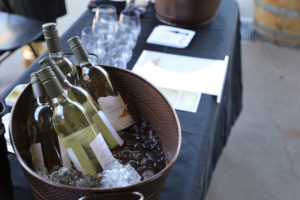
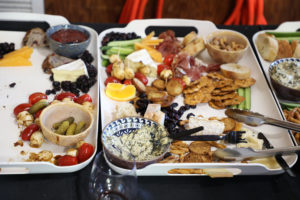

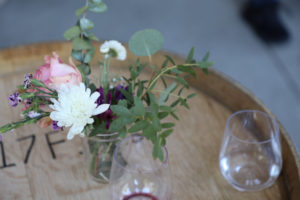
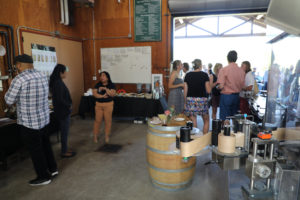
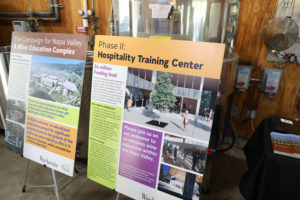

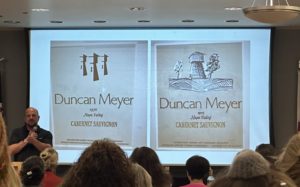
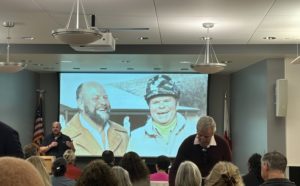
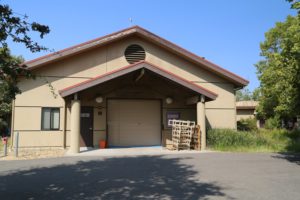
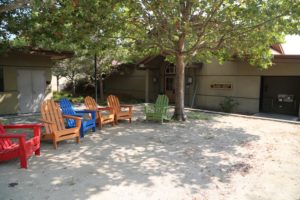
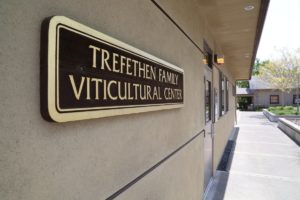
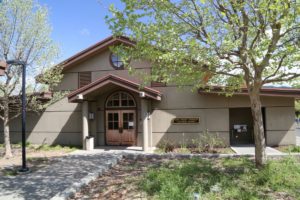
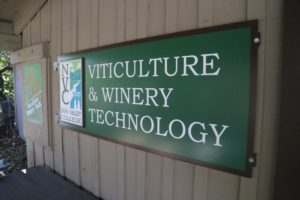
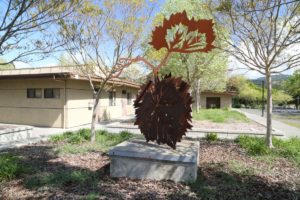
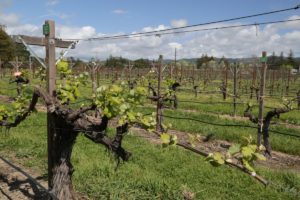
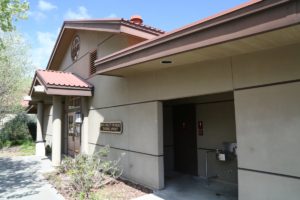
Programs like this are so helpful for young connoisseurs of wine. Nice to see the NVJC offers this 🙂
Hannah – exactly, and not only for the young – a number of people who move to the valley after 2nd careers who want to widen their wine education – often enroll in these classes.
Really sorry to have missed the ground breaking celebration. I’ve never met John Trefethen and would have enjoyed talking to him. We were off on a Napa Valley in Midwest trip, visiting places and spaces strongly connected to Napa Valley wineries and brands through ownership and heritage. Epic trip. Regardless, we are looking forward to seeing the progress develop on the Wine Spectator Wine Education Complex.
While not a Napa winery, super bummed to have missed Peter Molnar. We were actually in Hungary that day, visiting a couple of wineries with strong ties to the world famous Napa Valley including Trifecta and Disznókó Tokaji. Of course Kapcsandy and Hertelendy also have very strong ties to Hungary.